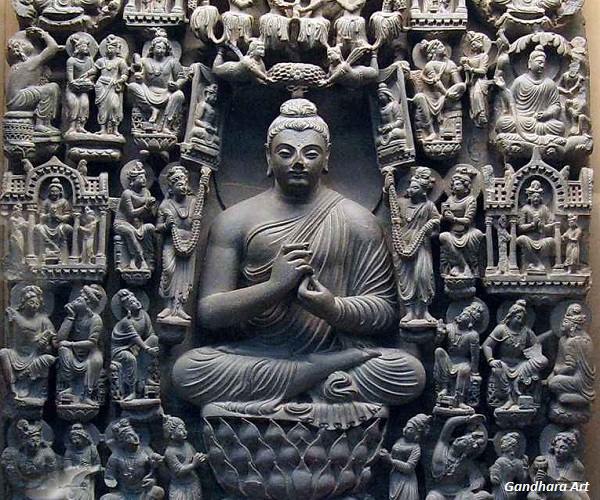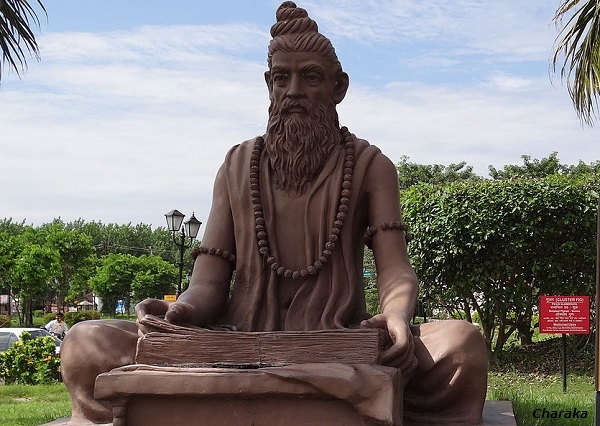
- Ancient Indian History - Home
- Study of Indian History
- Writing of Ancient Indian History
- Imperialist Historiography
- Historiography Nationalist Approach
- Marxist School of History
- Sources of Ancient Indian History
- Archaeological Sources
- Geographical Background
- Geography in Ancient Literature
- Stone Age Cultures
- Mesolithic Culture
- The Neolithic Age
- Chalcolithic Period of India
- Chalcolithic Culture In India
- Harappan Civilization
- Harappan Town Planning
- Harappan Crafts & Industries
- Harappan Culture
- Harappan Religion
- Harappan Chronology
- Vedic Civilization
- Vedic Society
- Vedic Politics
- Vedic Religion & Philosophy
- The Aryan Invasion
- Later Vedic Age
- Social System after Vedic Age
- Achievements of Indian Philosophy
- Evolution of Jainism
- Evolution of Buddhism
- Alexander’s Campaign in India
- Maurya Dynasty
- Kalinga War & its Impact
- Society & Economy during Mauryas
- Mauryan Governance
- Early History of South India
- Age of Smaller Dynasties
- Literature of Satavahana Period
- Society of Satavahana Period
- Economy of Satavahana Period
- Technology of Satavahana Period
- Chola Dynasty
- Pandya Dynasty
- Chera Dynasty
- Period of Foreign Invaders
- Gupta Period
- Decline of Guptas
- Governance of Gupta Period
- Literature of Gupta Period
- Economy in Gupta Period
- Science & Tech of Gupta Period
- India after the Gupta Period
- Period of Harsha
- South India during the Harsha Period
- Kadamba Dynasty
- History of Kamarupa
- India after Harsha
- Gurjara Pratiharas
- Palas of Bengal
- Rashtrakutas of Deccan
- Literature after the Harsha Period
- Society after the Harsha Period
- Economy after the Harsha Period
- Religion after the Harsha Period
- References & Disclaimer
Technology of Satavahana Period
The technological advancement (in terms of art & architecture as well as science & technology) of Satavahana period was pretty advanced.
Art and Architecture
Taxila, Sakala, Bhita, Kausambi, Ahichchhatra, Patliputra, Nagrujunkonda, Amaravati, Kaveripattanam were well planned and developed cities, protected by fortification walls and moats.
Buddhism stupas at Sanchi, Amaravati, Bharhut, and Sarnath are the best examples of art and architecture that flourished during this period.
Stupa is a hemispherical dome or mound built over sacred relics either of the Buddha himself or of a sanctified monk or a sacred text. Buddha relics were kept in a casket in a smaller chamber in the center of the base of the stupa.
The stupa has a fenced path around called Pradakshinapatha.
The four gateways of Sanchi stupa built in the first century B.C. are extremely artistic and are one of the finest examples of art and architecture of India.
One of these gateways was donated by the Guild of ivory workers of Vidisa.
-
Rock-cut caves are another form of marvel architecture of this period. These rock-cut caves are of two types, namely −
A stupa and worshipping hall called as Chaitya and
Monastery called as Vihara.
Sculpture
Bharhut, Sanchi, Bodh Gaya, Mathura, Amaravati, Gandhara were the important centers of art activities during post Mauryan period.
The Mathura and Gandhara schools flourished during the Kushana period.
The Mathura school produced many fine specimens of sculptures that included the images of Brahmanical, Jain and Buddhist deities and the life size sculptures of Yakshas, Yakshini, and portraits of the kings. This form of art is popularly known as Gandhara School of Art, which portrays the Buddhist themes.
Stucco was a popular medium in Gandhara art. Furthermore, the monasteries of Afghanistan were decorated with an abundance of stucco images.

Gandhara artists created the images of Buddha in different postures and sizes. The large statues of Bamiyan Buddha were one of the finest examples of the Gandhara art of having produced the first image of Terracotta.
The most productive centers of art production were Ahichchhatra, Mathura, Kausambi, Bhita, Rajghat, Pataliputra, Tamralipti, Mahasthan, etc.
Science and Technology
Engineering skills were evident in this period as proved by the remains of famous dam built for the irrigation works during Chandragupta Maurya's period and repaired by Saka king Rudradaman.
Another remarkable structure is a complex of four water tanks at Shringaverapura, which reflects a very advanced level of hydraulic engineering.
In Shringaverapura structures, tanks were built of millions of bricks and water was brought from the river Ganga through a canal measuring about 250 mts in length and 38 mts in width. It had the capacity of about eighty lakh litres of water.
Indian astronomers had developed an elaborated astronomical system after modifying and adopting more accurate values by counting the periods of revolution of the sun, the moon, the five planets, and the two nodes, namely Rahu and Ketu.
Eclipses were also predicted with an accuracy.
Pancha Siddhantika written by Varahamihira, gives the summary of five schools of astronomy present in his time.
Medicinal System
The Indian medicinal system was based on the theory of three humors - air, bile, and phlegm the correct balance of these maintains a healthy body.
The medicinal system made remarkable progress during this period.
The surgical equipment commonly consisted of twenty-five types of knives and needles, thirty probes, twenty-six articles of dressing, etc.
Athaavnaaveda is the source of Ayurveda branch of medicine.
Medicine became a regular subject of study at higher centers of learning like Taxila and Varanasi.
Varanasi was specialized in surgery.
Sushruta Samhita is an encyclopedia of surgery. It was compiled by the great surgeon Sushruta at Varanasi.
Charaka Samhita was compiled by Charaka at Taxila; it contains mainly the teachings of Atreya, which were collected by his pupils.

Charaka and Sushruta were the contemporaries of Kushana king Kanishka. The great works of Charaka and Sushruta reached as far as Manchuria, China, and Central Asia through translations in various languages.
Theophrastus gives details of the medicinal use of various plants and herbs from India in his book History of Plants.
This shows that the knowledge of Indian herbs and medicinal plants had reached the western world through Greeks and Romans.
Arabic translation of Charaka and Sushruta Samhitas in the 8th century A.D. influenced the Europeans and west Asian medicinal system during the middle age.
The large number of gold and silver coins-shows the purity of metal and craftsmanship of the period.